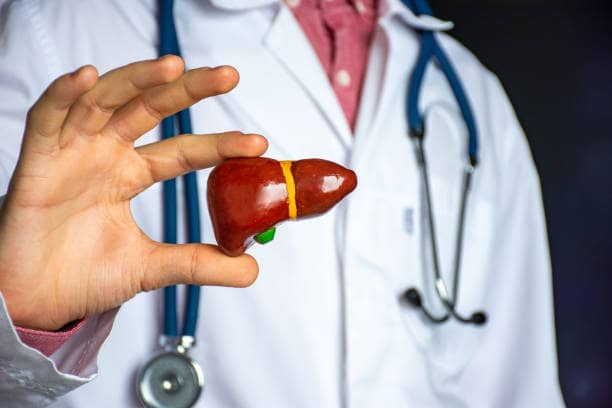What is Pulmonary Fibrosis: Pulmonary fibrosis is a progressive and often debilitating lung disease that affects millions of people worldwide. It is characterized by the scarring of lung tissue, leading to impaired lung function and, ultimately, difficulty in breathing. While there is no known cure for pulmonary fibrosis, various treatment options are available to manage symptoms, slow disease progression, and improve the quality of life for affected individuals. In this comprehensive guide, we will explore the various aspects of treating pulmonary fibrosis, from diagnosis to symptom management, and potential future advancements in treatment.

Understanding Pulmonary Fibrosis:
Before explaining into treatment options, it is crucial to understand what pulmonary fibrosis is and what causes it. Pulmonary fibrosis is a term used to describe a group of lung diseases in which the lung tissue becomes scarred and thickened over time. This scarring, also known as fibrosis, makes it increasingly difficult for the lungs to function properly by reducing their ability to expand and contract, leading to a decrease in the amount of oxygen that can be delivered to the bloodstream.
There are various causes of pulmonary fibrosis, including:
- Idiopathic Pulmonary Fibrosis (IPF): This is the most common form of pulmonary fibrosis, and its cause is unknown. It often affects individuals in their 50s and 60s and has a poor prognosis.
- Environmental Factors: Exposure to environmental factors such as asbestos, silica dust, and certain chemicals can lead to pulmonary fibrosis.
- Autoimmune Diseases: Conditions like rheumatoid arthritis and scleroderma can cause lung inflammation and fibrosis.
- Medications: Some medications, such as certain chemotherapy drugs and antibiotics, have been associated with lung damage that can lead to fibrosis.
- Genetics: In some cases, pulmonary fibrosis can run in families, suggesting a genetic predisposition.
Diagnosis and Evaluation:
Proper diagnosis is essential for determining the most suitable treatment plan for pulmonary fibrosis. Diagnosis typically involves a combination of medical history, physical examination, and various tests, including:
- High-Resolution Computed Tomography (HRCT): This imaging technique provides detailed pictures of the lungs, allowing healthcare professionals to visualize scarring and assess its severity.
- Pulmonary Function Tests (PFTs): PFTs measure lung function, including how well you can breathe in and out and how efficiently oxygen is transferred into the bloodstream.
- Bronchoscopy: This procedure involves inserting a thin, flexible tube into the airways to examine lung tissue and collect samples for analysis.
- Blood Tests: Blood tests can help rule out other potential causes of lung problems, such as infections or autoimmune diseases.
- Biopsy: In some cases, a surgical lung biopsy may be necessary to confirm the diagnosis and determine the specific type of pulmonary fibrosis.
Once a diagnosis is confirmed, healthcare providers can develop a personalized treatment plan tailored to the patient’s needs and the stage of the disease.
Pulmonary Fibrosis Treatment Options:
While there is no cure for pulmonary fibrosis, several treatment approaches can help manage the condition, alleviate symptoms, and slow down disease progression. The choice of treatment often depends on the underlying cause of the fibrosis, the stage of the disease, and the patient’s overall health. Here are some of the primary treatment options:
1. Medications:
a. Antifibrotic Medications: For individuals with idiopathic pulmonary fibrosis (IPF), antifibrotic drugs like pirfenidone and nintedanib have been shown to slow disease progression. These medications work by reducing inflammation and preventing further fibrosis.
b. Immunosuppressants: In cases where pulmonary fibrosis is caused by an autoimmune disease, such as rheumatoid arthritis or scleroderma, immunosuppressive drugs like prednisone may be prescribed to reduce inflammation.
c. Bronchodilators: These drugs help relax the airways, making it easier to breathe and reducing shortness of breath.
2. Oxygen Therapy: For patients with advanced pulmonary fibrosis who experience low oxygen levels, supplemental oxygen therapy can be beneficial. Oxygen therapy helps improve oxygen saturation in the blood and reduces symptoms like fatigue and shortness of breath.
3. Pulmonary Rehabilitation: Pulmonary rehabilitation programs are designed to help patients with pulmonary fibrosis improve their lung function and overall physical fitness. These programs typically include exercise training, breathing exercises, and education on managing the condition.
4. Lung Transplantation: In severe cases of pulmonary fibrosis where other treatments are ineffective, lung transplantation may be considered. A lung transplant can significantly improve a patient’s quality of life and increase their life expectancy. However, this option is limited by donor availability and eligibility criteria.
5. Supportive Care: Comprehensive supportive care is essential for managing the symptoms and improving the overall well-being of individuals with pulmonary fibrosis. This includes:
a. Smoking Cessation: If the patient smokes, quitting is crucial to slow disease progression.
b. Vaccinations: Regular vaccinations, such as flu and pneumonia vaccines, can help prevent respiratory infections that could worsen the condition.
c. Diet and Nutrition: A balanced diet can help maintain overall health and energy levels.
d. Emotional Support: Dealing with a chronic lung disease can be emotionally challenging. Support groups, counseling, and therapy can be valuable resources for patients and their families.
e. Advanced Care Planning: Discussing end-of-life care preferences and decisions with healthcare providers and family members is important for ensuring that the patient’s wishes are respected.
Emerging Treatment Approaches: Research into pulmonary fibrosis is ongoing, and there are several emerging treatment approaches that hold promise for the future. These include:
1. Stem Cell Therapy: Stem cell therapy is being explored as a potential treatment for pulmonary fibrosis. By using stem cells to repair damaged lung tissue, this approach aims to reverse the scarring and improve lung function. However, it is still in the experimental stages and requires further research and clinical trials.
2. Targeted Therapies: Advancements in understanding the molecular pathways involved in fibrosis development have led to the exploration of targeted therapies. These drugs aim to specifically inhibit the processes that lead to fibrosis, potentially offering more effective and precise treatment options.
3. Gene Therapy: Gene therapy holds promise for treating genetics form of pulmonary fibrosis. By correcting or replacing faulty genes responsible for fibrosis development, this approach could potentially stop or reverse the progression of the disease.
Lifestyle Changes and Self-Care: In addition to medical treatments, individuals with pulmonary fibrosis can take steps to improve their quality of life through lifestyle changes and self-care practices:
1. Stay Active: Engaging in regular physical activity, as recommended by healthcare providers, can help maintain muscle strength and endurance, making it easier to cope with breathlessness.
2. Balanced Diet: A balanced diet rich in nutrients can support overall health and energy levels. It’s essential to follow dietary recommendations from healthcare professionals.
3. Avoid Environmental Hazards: Minimize exposure to environmental factors that can worsen lung health, such as cigarette smoke, air pollution, and occupational hazards.
4. Monitor Symptoms: Keep a record of symptoms and discuss any changes with your healthcare team. Early detection of worsening symptoms can lead to prompt intervention.
5. Seek Emotional Support: Living with a chronic lung condition can be emotionally challenging. Consider joining a support group or seeking therapy to cope with the emotional aspects of the disease.
Conclusion:
Pulmonary fibrosis is a complex and challenging lung disease that requires a multidisciplinary approach to treatment. While there is no cure, various treatment options are available to manage symptoms, slow disease progression, and improve the quality of life for affected individuals. Early diagnosis, personalized treatment plans, and ongoing supportive care are essential components of managing pulmonary fibrosis. As research continues to advance, there is hope that emerging therapies and breakthroughs in treatment will offer even more effective options for those living with this condition. If you or a loved one are affected by pulmonary fibrosis, consult with healthcare professionals to develop a making treatment plan and explore available resources for support and information.








3 thoughts on “What is Pulmonary Fibrosis?”